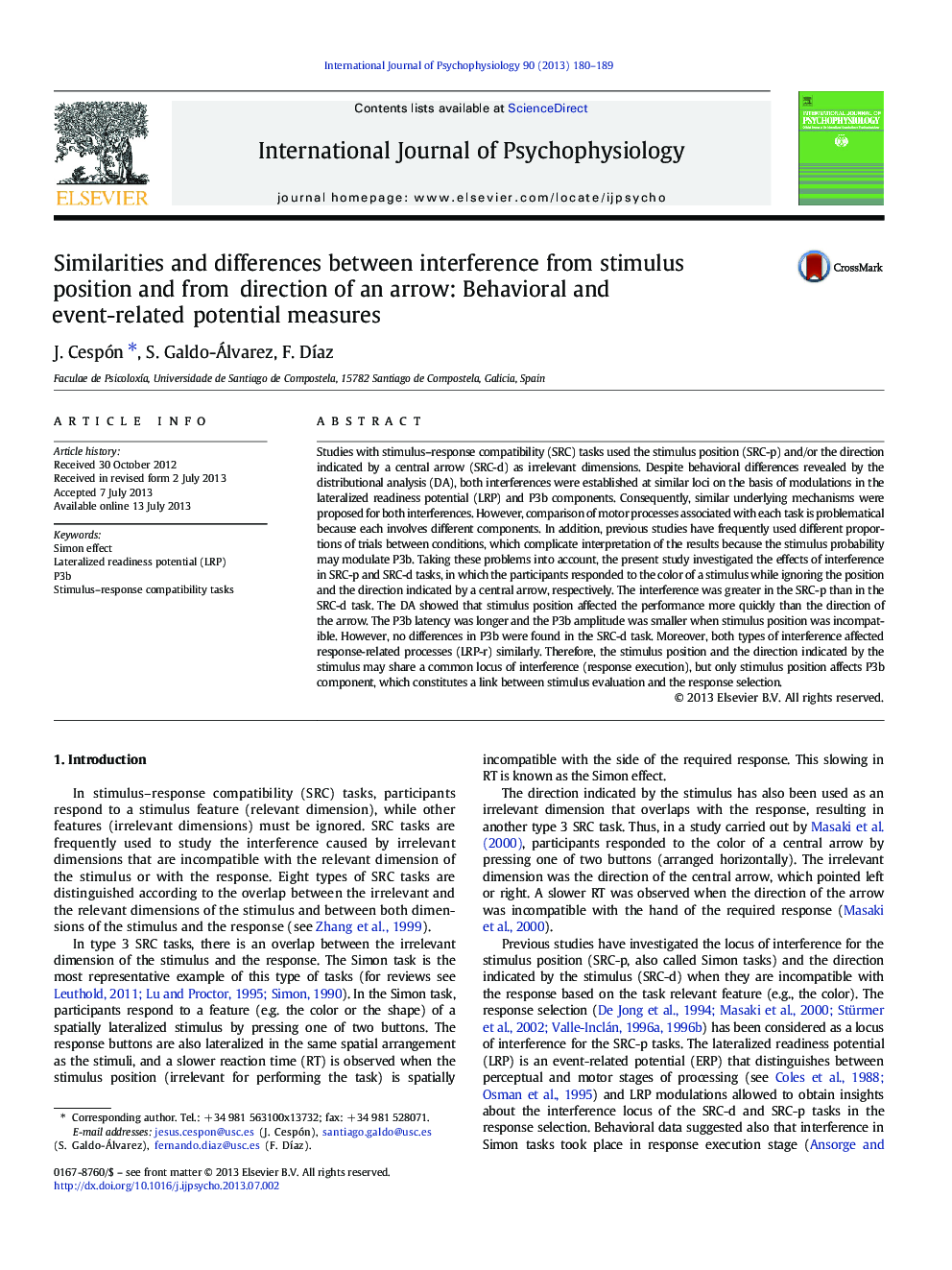| کد مقاله | کد نشریه | سال انتشار | مقاله انگلیسی | نسخه تمام متن |
|---|---|---|---|---|
| 929753 | 1474425 | 2013 | 10 صفحه PDF | دانلود رایگان |

• Compatibility effects from stimulus position and direction of an arrow were studied.
• Position affected the performance earlier and stronger than direction of the arrow.
• Stimulus position, but not direction, affected the stimulus categorization (P3b).
• Position and direction affected motor execution of the response (LRP-r) similarly.
Studies with stimulus–response compatibility (SRC) tasks used the stimulus position (SRC-p) and/or the direction indicated by a central arrow (SRC-d) as irrelevant dimensions. Despite behavioral differences revealed by the distributional analysis (DA), both interferences were established at similar loci on the basis of modulations in the lateralized readiness potential (LRP) and P3b components. Consequently, similar underlying mechanisms were proposed for both interferences. However, comparison of motor processes associated with each task is problematical because each involves different components. In addition, previous studies have frequently used different proportions of trials between conditions, which complicate interpretation of the results because the stimulus probability may modulate P3b. Taking these problems into account, the present study investigated the effects of interference in SRC-p and SRC-d tasks, in which the participants responded to the color of a stimulus while ignoring the position and the direction indicated by a central arrow, respectively. The interference was greater in the SRC-p than in the SRC-d task. The DA showed that stimulus position affected the performance more quickly than the direction of the arrow. The P3b latency was longer and the P3b amplitude was smaller when stimulus position was incompatible. However, no differences in P3b were found in the SRC-d task. Moreover, both types of interference affected response-related processes (LRP-r) similarly. Therefore, the stimulus position and the direction indicated by the stimulus may share a common locus of interference (response execution), but only stimulus position affects P3b component, which constitutes a link between stimulus evaluation and the response selection.
Journal: International Journal of Psychophysiology - Volume 90, Issue 2, November 2013, Pages 180–189